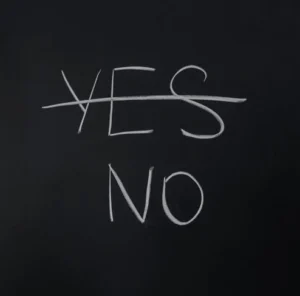Dites NON (plus souvent)
Carte Habitude
Cliquez sur la case
Télécharger vos produits gratuits
Télécharger vos produits gratuits
Cliquez sur la case
Cliquez sur la case
Revue hebdomadaire
Conseils pour fixer des objectifs réalistes et atteignables, même dans des environnements à haute pression.
Surmonter l'anxiété au travail
Résumé: Strategies for reducing workplace anxiety and creating a secure environment for all employees
Résultat principal: Réduction de l’anxiété au travail
Principaux avantages: Improved overall mental health and productivity
Prochaines étapes: Implement stress-reduction techniques and monitor their effectiveness
Délai de réalisation : 30 minutes
Public cible: All employees, Mental health advocates
 Why it works
Why it works 
Before:
Dire « non » est une compétence essentielle pour rester concentré, énergique et aligné sur vos priorités. De nombreux professionnels ont du mal à y faire face par peur de décevoir les autres, par peur de rater des opportunités ou par habitude bien ancrée de plaire aux gens. Cependant, chaque « oui » à quelque chose qui ne correspond pas à vos objectifs est un « non » à quelque chose qui compte vraiment.
After:
Cet article vous aidera à développer la confiance et la clarté nécessaires pour dire « non » efficacement tout en maintenant des relations solides et une crédibilité professionnelle. Ainsi, en disant NON plus souvent d'une manière qui protège la sécurité de vos relations, vous disposez de plus de temps pour vos priorités, donc votre prestation et vos performances augmentent, ce qui alimente le cycle vertueux de Dire NON plus souvent.

 FAIRE
FAIRE 
Pause Before Responding
- When asked to commit to something, resist the urge to answer immediately.
- Take a deep breath and say, “Let me check and get back to you.”
Use a Default No
- Have a go-to phrase like, “I appreciate the opportunity, but I can’t take this on right now.”
Clarify Your Priorities
- Before the next workday, list your top 3 priorities. When a new request arises, check if it aligns.
Practice with Low-Stakes Scenarios
- Start saying “no” in minor situations (e.g., declining extra work at a restaurant or skipping a social event you don’t enjoy).
Set Up a Buffer
- Use a scheduling rule, like “No new commitments on Fridays” or “No meetings before 10 AM,” to create automatic boundaries.
 NE PAS FAIRE
NE PAS FAIRE 
Don’t Over-Explain
- A concise “no” with a brief reason is more effective than long justifications.
Don’t Say Yes Out of Guilt
- Feeling guilty is not a valid reason to take on extra work.
Don’t Delay the Inevitable
- If you know you need to decline, do it quickly and respectfully rather than procrastinating.
Don’t Apologize for Prioritizing
- You have the right to manage your time and energy without guilt.
- Eventually / during your Year End review, your raise, promotion, … will be decided on your overarching goals delivery
Don’t Use Soft No’s
- Phrases like “maybe later” or “I’ll try” invite follow-ups. Be clear.
 Example
Example 
Video to be uploaded
 Your next 2 weeks steps
Your next 2 weeks steps 
Start NOW or schedule your first try:
- Apply TO DO right away (<5 minutes)
- Once done, decide your commitment for the next 2 weeks
- How are you feeling right after? Compared to before? What was the value for you?
- What to adjust for you to commit for 2 weeks?
- Visualize the next time you apply it and how you would like to feel
- Celebrate that you have tried something new
2 Week plan proposal:
- Week 1: Awareness & Small Steps; every morning for under 5 minutes, think of your upcoming day:
- Reflect on the “NO” you said on the last day, and visualize how you would want to feel next time instead.
- Identify 3 situations where you typically say “yes” when you should say “no.”
- Write down your default “no” response and practice saying it out loud.
- Visualize yourself pausing before responding to any new requests.
- Week 2: Implement & Strengthen; every morning for under 5 minutes, think of your upcoming day:
- Reflect on the “NO” you said on the last day, and visualize how you would want to feel next time instead.
- What opportunity today to say “no” using a confident but kind approach?
- Set and share with a peer or your manager 3X+ personal boundary rules (e.g., “No meetings before noon”…).
- Visualize yourself applying the above and it makes you feel compared to how you would like to feel instead.
Build your habit (-> more practice -> more results)
- Model: After [OTHER CURRENT HABIT] and at/when [TIME], I will [NEW HABIT] in [LOCATION].
- Example: Before I go into a meeting, or during my Daily Planning Review, I visualize 1) my current priorities; 2) what others could ask me, that I would want to Say “NO” to, and 3) myself saying “NO” to the ask, and feeling good about it.
- Print your sticky habit
Total time:
5m/day X 8 = 40 minutes in 2 weeks
How you measure success:
Have applied at least 8X times in the next 2 weeks
What value you can expect:
More time available for your priorities; prouder about yourself for the courage to say NO while maintaining safety; stronger relationships with others
How to get started:
Print and fill your Habit template then apply right away
 With more time
With more time 
Apply more often
Learn more:
on this subject
Morning Visualization Routine
Evening Visualization Routine
Reset routine





